Comparison between the calculations done by Cableizer and CYMCAP for a few basic arrangements.
Posted 2020-05-17
Categories:
Validation
Recently, we have been asked several times if we have a certification of our software. However, there is no notified body which tests the accuracy of thermal rating software and hands out certifications.
We have also been asked if we have comparisons to other software tools, especially compared to CYMCAP. There is the CIGRE working group B1.56 regarding the verification of cable current ratings. They are preparing a guide which will include some basic arrangements which will be solved step-by-step. It was announced to be published end of 2018, then end of 2019 and now they say sometimes in 2020. As of today, it is not yet published. What can be expected was presented at the Jicable conference 2019 in Paris. There was a lot of discussion, because CIGRE proposed changes to the IEC standard and made calculations using these modified methods. We as a software manufacturer are certainly open for improvements and we welcome the tipps given by the upcoming CIGRE guide. However, a comparison must be possible with pure IEC standard because our users demanding that we follow the IEC standard. The CIGRE guide should provide step-by-step calculations for both.
Even without this CIGRE guide, we continuously and automatically validate our simulation results since the beginning. All validation is collected in a comprehensive test suite, which allows us to ensure that modifications to our code do not unexpectedly affect the simulation results. Deviations between calculated values and previous results as well as between calculated values and reference values are analyzed. The reference values are results from standards, technical papers, books, data sheets of cable suppliers, as well as results from competitors for the same cable construction and laying arrangement. Several of these test cases are compared to the results from CYMCAP. For the first time, we now present a few test cases with full test reports.
| CYMCAP | Cableizer |
|---|---|
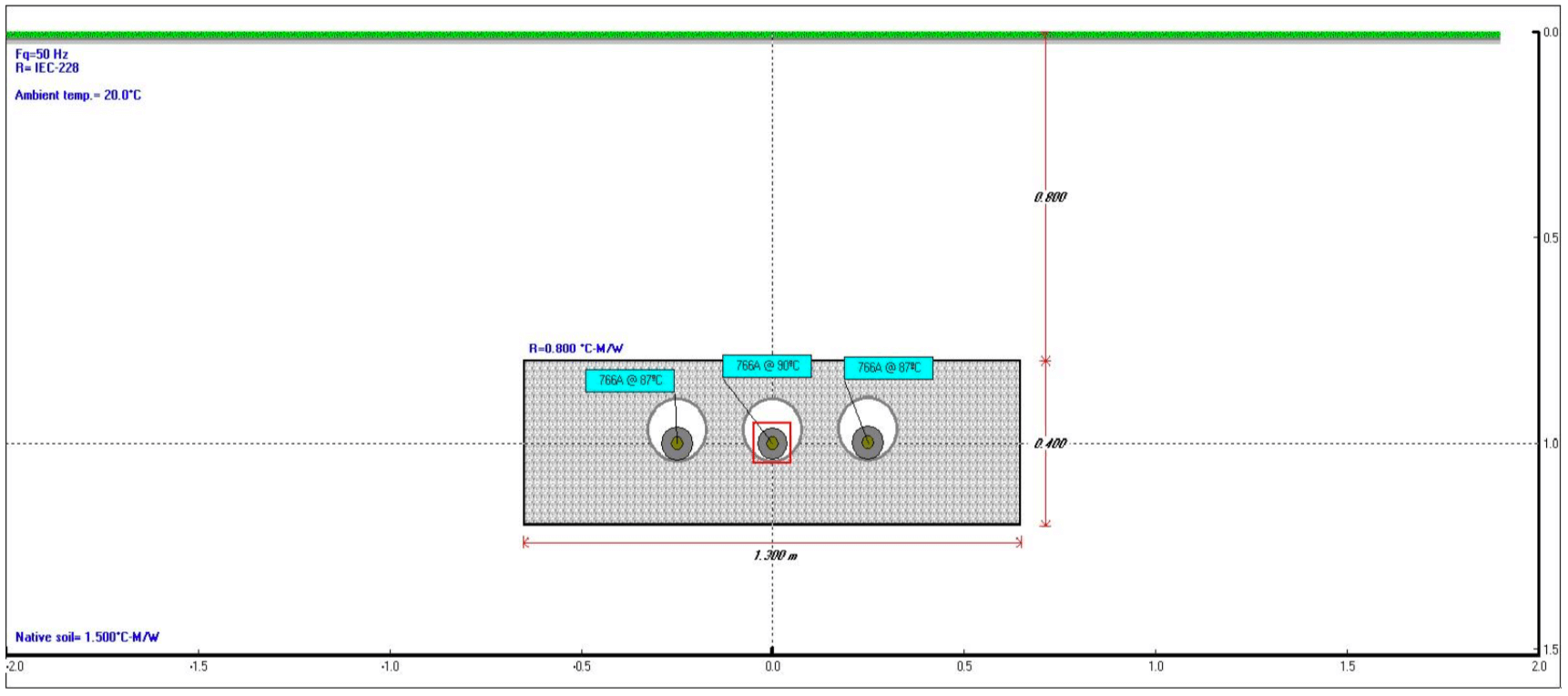
| 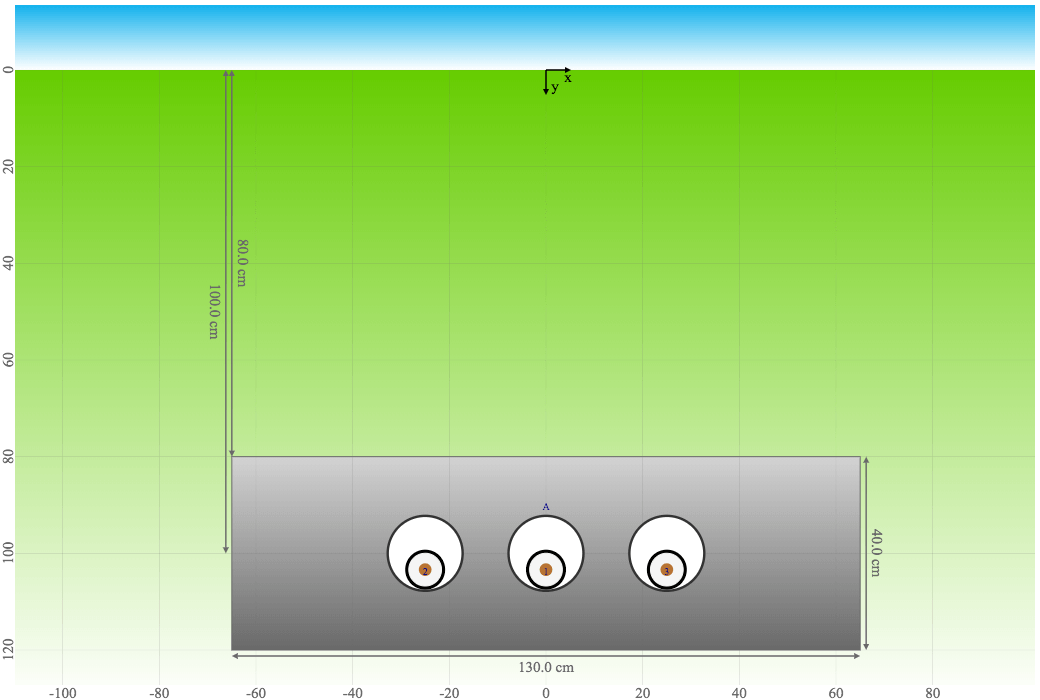 |
There is a tiny difference between the results. We cannot explain where the difference comes from because we don't know all the sub-parameters CYMCAP uses. However, the IEC published new editions of the standards IEC 60287-1-1 in November 2014 and of IEC 60287-2-1 in April 2015. We use the current edition of the standards but at the time the calculations were made with CYMCAP, those standards were not yet published. It is unlikely that they used draft editions of the standards for the official software version. In IEC 60287-1-1, for example, the calculation of the skin effect factor changed. It may also be just a rounding error either caused by the input data or the software (we use Python 3) or the convergence criterion.
| CYMCAP | Cableizer |
|---|---|
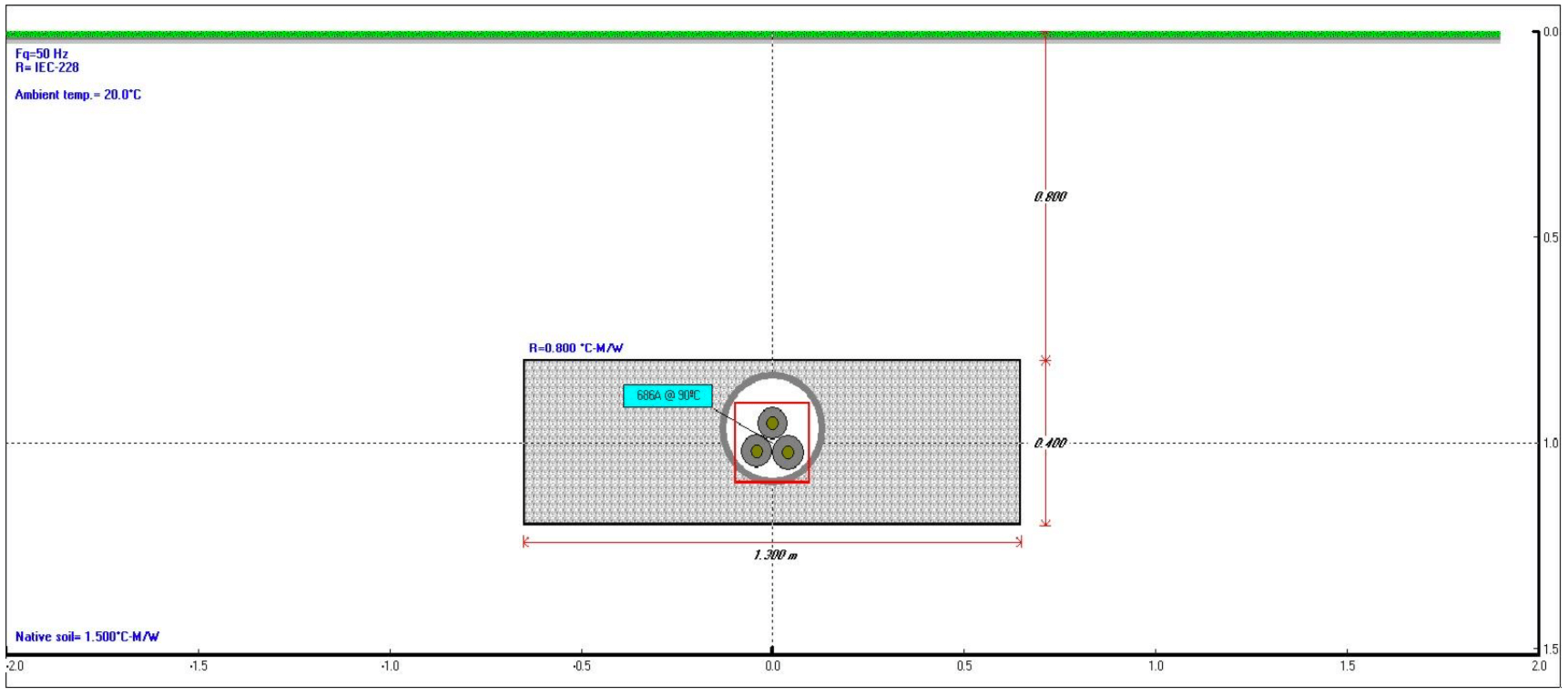
| 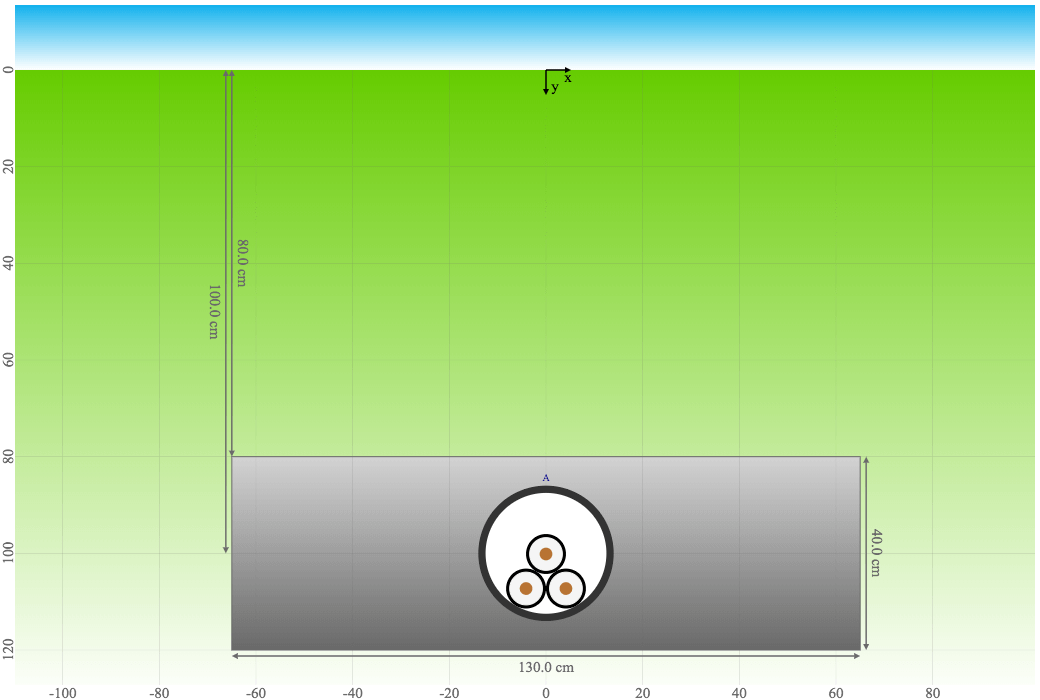 |
There is a small difference for this case, still less than 1% of deviation. Here, CYMCAP makes a mistake related to the thermal resistance to ambient $T_4$. For separate cables one takes the effective position of each individual cable in the pipe. The laying depth $L_c$ is used directly in the calculation of $T_4$. However, for three cables in a common duct, the laying depth of the pipe itself applies to the $T_4$, and this $T_4$ applies to all three cables. The exact location of the cable inside the duct is not relevant, it is assumed that the pipe forms an isotherm on the outside and is an object with a certain amount of heat. CYMCAP, however, used the laying depth of each of the three cables. Therefore, the thermal model in Cymcap is not correct.
Important: We do not know whether this has been resolved in the current version. It is likely that they did because the possibility to calculate multiple cables in a common duct was only just introduced in version 5 of the software which was used for the validation.
| CYMCAP | Cableizer |
|---|---|
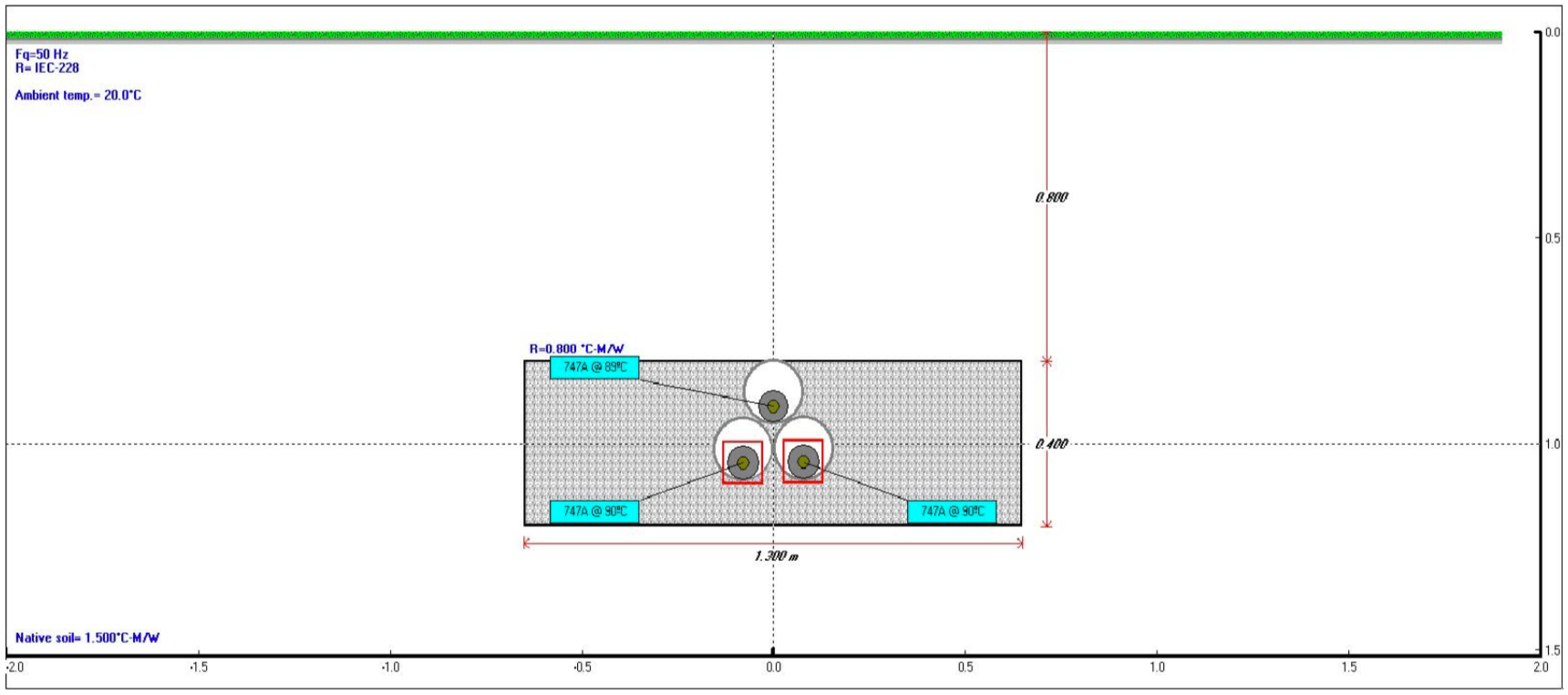
| 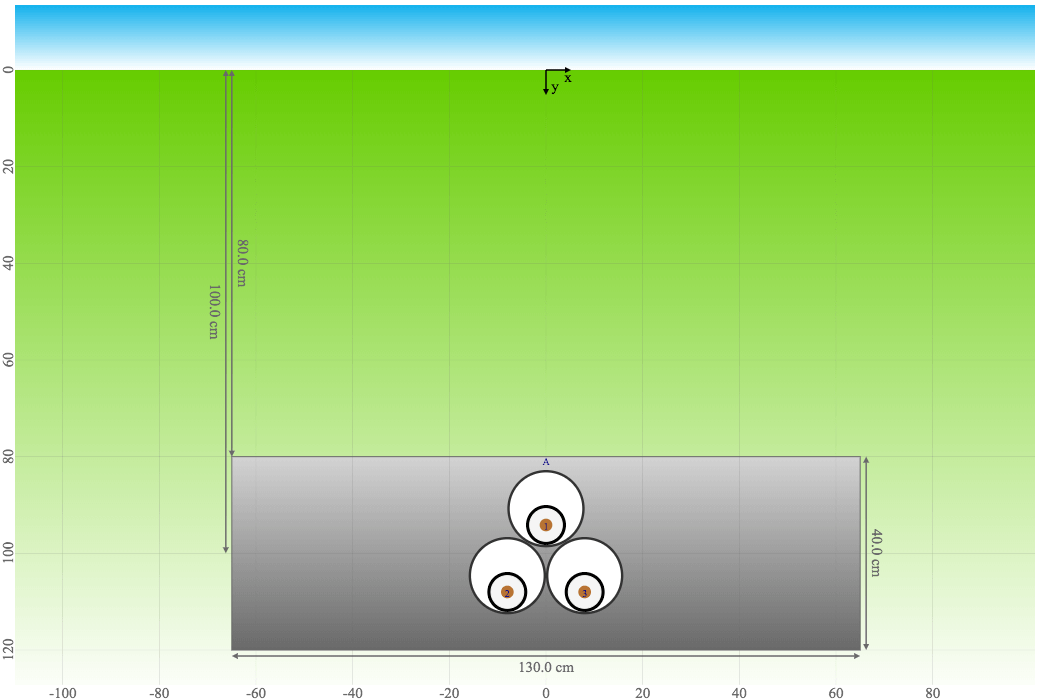 |
Both results are identical.
| CYMCAP | Cableizer |
|---|---|
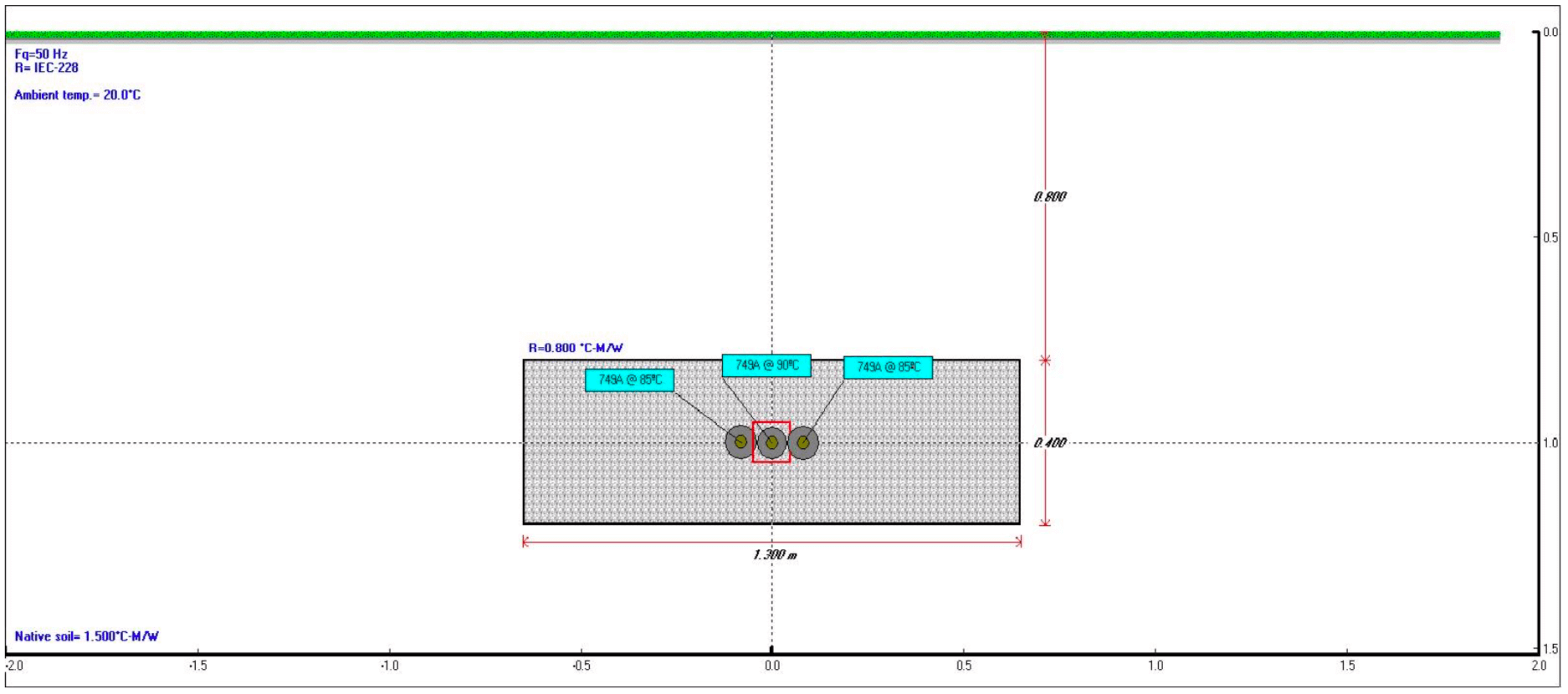
| 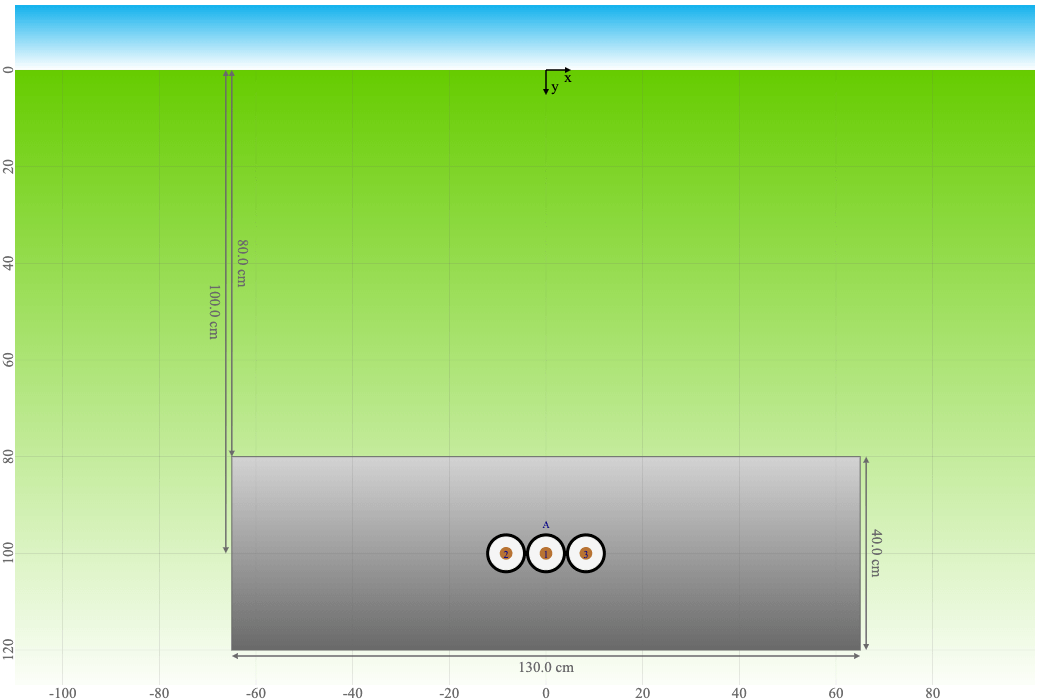 |
There is a larger difference for this case, about 2.6% of deviation. Here, CYMCAP does not use the appropriate equation acc. to the IEC 60287-2-1 standard when calculating the thermal resistance to ambient $T_4$. For three touching cables in flat formation, a specific equation shall be taken acc. to chapter 4.2.4.2 of IEC 60287-2-1 Ed. 2.0, published 2015. However, CYMCAP is using the standard equation for non-touching cables which results in a lower value for $T_4$ and thus in a higher rating.
Important: We do not know whether this has been resolved in the current version. It is likely that they did not because the previous editions of the standard already used the same equations. And since there was no change here, they likely did not see the need to make a correction. We hope to get some clarity from the upcoming CIGRE guide which equation is recommended.
Calculations with CYMCAP were all made in 2014 by FKH Zurich with their license for the basic module of CYMCAP rev. 5.3b. We have no access to the current version of CYMCAP and cannot verify neither new arrangements nor if there were any changes in CYMCAP which affect the test cases.
CYMCAP is a powerful tool with several features that we do not yet provide. We bow our head to the module for multiple duct banks and backfills and the module for multiple casings. Cableizer on the other hand has other unique features such as multiple systems in ventilated tunnels, multiple system crossings, unfilled troughs, magnetic fields, cable pulling, and we are web-based.